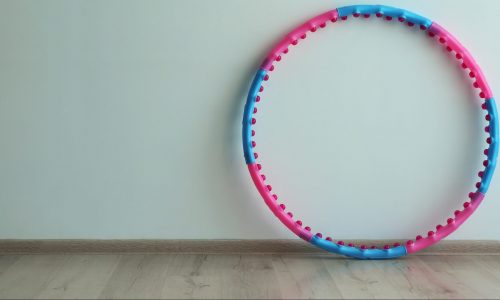The Best Bivy Sacks

Our Review Process
Don't Waste Your Money is focused on helping you make the best purchasing decision. Our team of experts spends hundreds of hours analyzing, testing, and researching products so you don't have to. Learn more.
Our Picks For The Top Bivys
- 1. Delmera Tear-Resistant Reusable Bivy
- 2. DIBBATU Nylon Extreme Environment Bivy
- 3. Go Time Gear Life Compact Waterproof Bivy
- 4. Bearhard Outdoor Multifunction Bivy, 2-Pack
- 5. Don’t Die in The Woods Tear-Resistant Compact Bivy
- 6. Zmoon Waterproof Nylon Bivy, 2-Pack
- 7. Survival Frog Tact Bivvy 2.0 Tear-Resistant Bivy
- 8. S.O.L. Survive Outdoors Longer Survival Bivy
- 9. Mezonn Compact Heat-Resistant Bivy
Are you an outdoor adventurer? If so, you'll want to have this bivy with you on every trip. It's constructed using a tough Mylar that won't rip or make a lot of noise. The bivy also features sealed seams, so you won't have to worry about water or snow penetrating the bag.
Multiple Color OptionsYou'll find this bivy comes in a choice of green, orange or camo.
With this high-quality bivy, you're sure to stay nice and warm. In fact, the emergency tool is able to retain 90% of a person's body heat. Additional uses include protecting yourself from the elements and creating a barrier between the ground and your sleeping bag.
High Heat RetentionThis lightweight bivy fits neatly inside a carry sack that can quickly be tossed in a backpack for a weekend outdoor adventure.
This ultra-light emergency sleeping bag, which is constructed with an extra-thick, tear-resistant 26um mylar material, is suitable for repeated uses. A waterproof nylon sack protects the bag, which also comes with a 550-pound nylon core drag string that can used to secure or repair gear in a pinch and a 120-decibel emergency whistle.
Versatile Survival KitA blanket, survival shelter and bivy sack in one, this option is the ultimate emergency package.
This versatile bivy comes in a choice of camo or orange. It's super lightweight and folds up to fit in the palm of your hand. Of course, the blanket's biggest feature is its 90% heat retention, which keeps you nice and toasty even when the weather outside is cold and frigid.
Economical OptionAlthough this bivy has an affordable price tag, it doesn't sacrifice on quality.
Buying Guide
Originally developed as a one-person shelter to protect mountaineers and climbers from rain and snow during multi-day ascents, the bivouac sack — or bivy sack — now has a wider range of uses. A traditional bivy sack, made from a waterproof, tear-resistant fabric, performs two basic functions: to increase the user’s body temperate and keep them dry.
Bivies — reminiscent of an ultra-lightweight sleeping bag or extra-large rain jacket shell — have all have a built-in head opening and come with features like drawstrings around the head opening to seal out moisture, full-length zippers and factory-sealed seams for extra warmth. The outer shell of the sacks is available in many different colors, including bright, attention-grabbing hues like red and yellow to improve the user’s visibility to rescue crews.
The products, which are stored in a compact bag, are ideal for emergency preparedness, backcountry excursions, long-distance biking trips, train running and winter camping. The primitive shelters are ideal for sleeping in technical terrain, where ledges are too cramped for a tent, but can also be used as a poncho, blanket, sleeping bag liner, ground cover and more. Some bivy sacks are also equipped with a whistle and a nylon core drawstring that can be used to secure or repair gear, making those options great for emergency situations. Because bivies can be reused, easily stored and often weigh just a few ounces, they’re convenient for travel and outdoor adventure.
What’s the difference between a bivy sack and a bivy shelter? The latter is a low-rise tent that includes mesh panels attached to the head opening or hoops to keep the fabric off your face (think: a fancy bivy sack).
What to Look For
- Depending on the product, bivy sacks are designed to help users retain up to 90% of their body heat.
- If you’re a tent camper who wants to downsize to a no-fuss shelter, a bivy sack could be the answer; since they require no setup, pitching or breakdown, they’re great for adventurers who want to maximize their time with a fast overnight.
- Bivies are great alternatives to tents in warmer temperatures (for example, above 50).
- If you plan to use your bivy sack for camping, increase your comfort by placing a bottle filled with hot water in the core zone (your crotch or armpit area) for extra warmth, use a sleeping pad underneath for extra cushion and pull the drawstring around the opening snugly around your head to avoid breathing into the bivy and to seal out moisture.
More to Explore
- The definition of a bivouac is a temporary encampment under little or no shelter.
- While tents date as far back as 40,000 B.C., the recreational tent wasn’t popularized in the United States until the first half of the 20th century, when Americans had more resources and leisure time to spend outdoors after the Industrial Revolution.



















